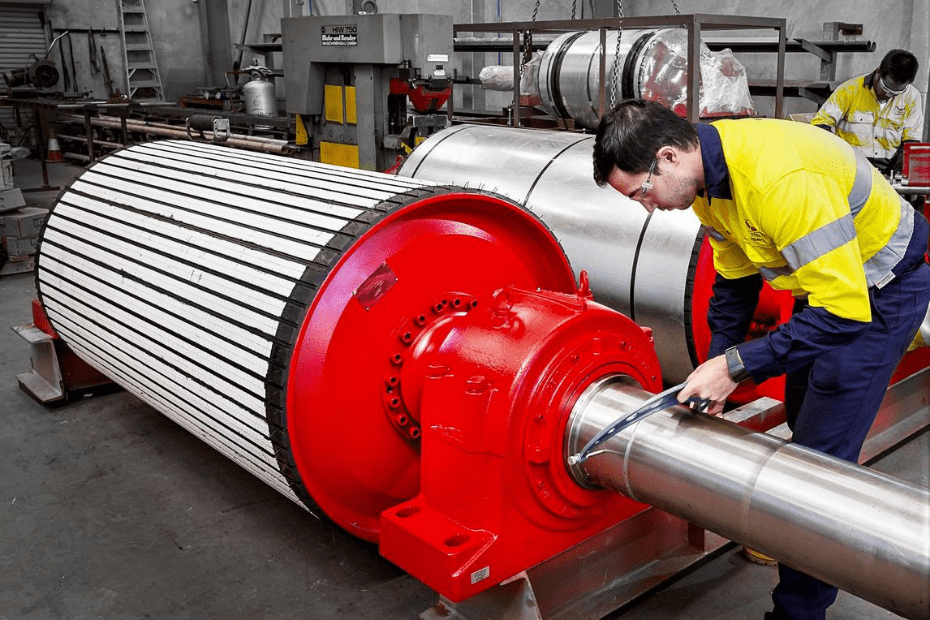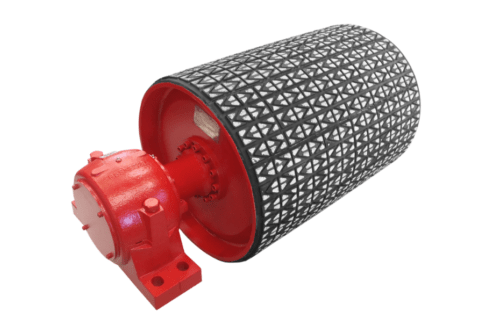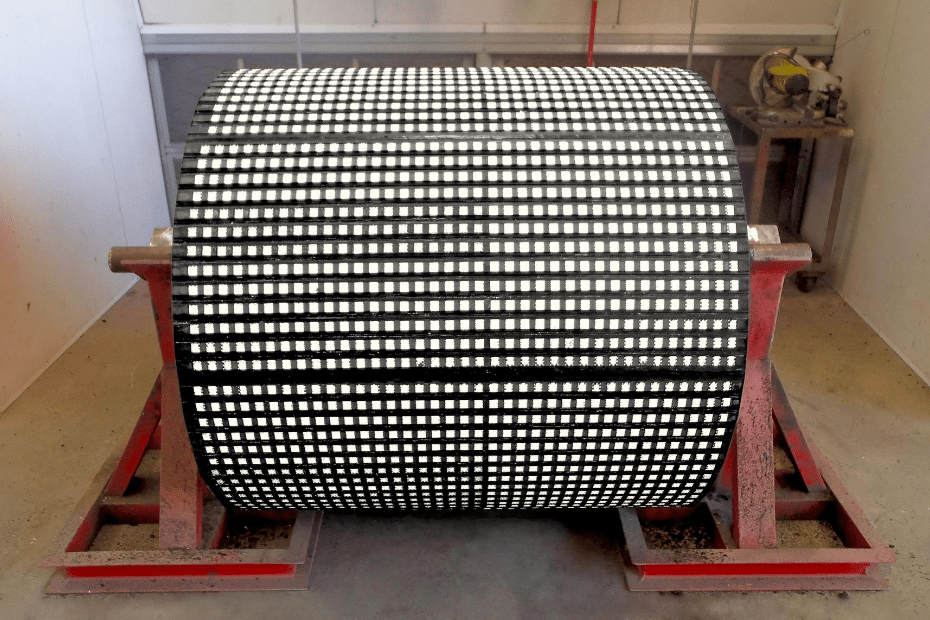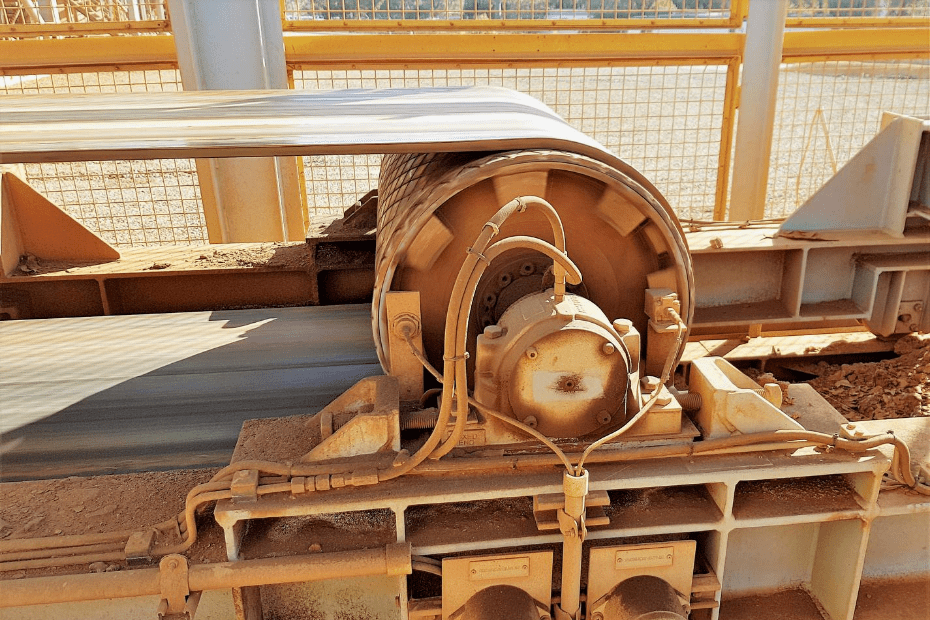
Hot vs Cold Vulcanised Bonding
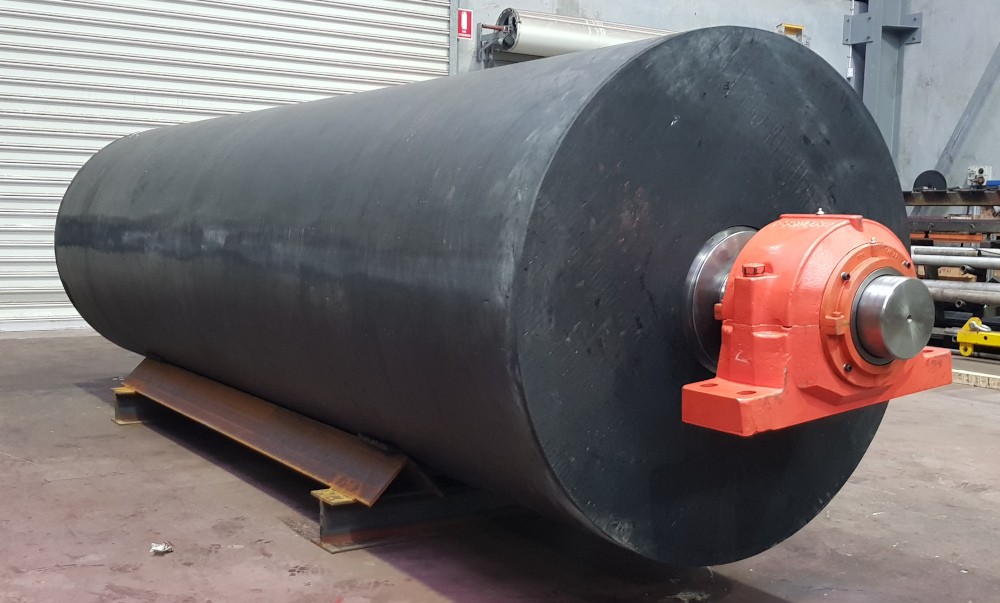
When it comes to rubber pulley lagging, there are two methods of bonding which are always talked about, cold vulcanised bonding and hot vulcanised bonding.
There are some major advantages and disadvantages of each method. But do you really know what is involved in each process, or when to use each method? Outlined below are some aspects of each method you might want to consider when selecting which method to use.
Cold Vulcanised Bonding
The cold vulcanised bonding method is performed by gluing strips of rubber lagging directly to the pulley shell. The process is less involved and less complicated than hot vulcanised lagging.
Advantages of Cold Vulcanised Bonding
One of the advantages of cold vulcanised bonding is the process is cheaper when compared to hot vulcanised. Being less involved and easier to perform not only assists in keeping the cost down but the lead-time is also shorter.
Another key advantage is that the process can be performed on site without removing the pulley from the conveyor. Cold vulcanised bonding is the go-to method for emergency lagging repairs.
Disadvantages of Cold Vulcanised Bonding
One of the downsides of using cold vulcanised bonding is there are more potential modes of failure.
One of the common modes of failure is caused by gaps between the rubber strips. The glue and filler which is used to join the rubber strips can be worn away leaving gaps in the lagging. This can allow water to penetrate the lagging and may lead to pulley shell corrosion.
Corrosion of the pulley shell can cause the rubber lagging to lift off the pulley shell. When the pulley is refurbished the pulley shell may need to be machined to remove the corrosion and may lead to a reduction in the shell thickness.
Due to the increased modes of failure, the average service life of cold vulcanised lagging is generally shorter than hot vulcanised.
Summary – Cold Vulcanised Bonding
Advantages
• The cheaper bonding method
• Less complicated and more convenient
• Can be done without removing the pulley from the conveyor
• Shorter lead times
Disadvantages
• Additional modes of failure
• Average shorter service life
Hot Vulcanised Bonding



The hot vulcanised bonding method is performed by applying a continuous layer of rubber around the shell of the pulley. The process involves melting and curing the rubber in a hot steam oven to eliminate any gaps and joins to make a seamless layer of rubber lagging.
Advantages of Hot Vulcanised Bonding
One of the advantages of hot vulcanised bonding is the bond between the rubber and the pulley shell is much stronger when compared to cold vulcanised lagging.
There are also less modes of failure because the process eliminates gaps in the lagging and the steam curing reduces risk of the rubber lagging separating from the pulley shell.
Disadvantages of Hot Vulcanised Bonding
Overall hot vulcanised bonding is the better method in regard to the service life and performance. However, one of the downsides is that the process is more complicated. This leads to longer lead-times.
The cost is also higher when compared to cold vulcanised bonding. The process cannot be done on site and needs special equipment. This process is not recommended for emergency repairs.
Summary – Hot Vulcanised Bonding
Advantages
• Stronger bonding method
• Less modes of failure
• Longer service life
Disadvantages
• The process is more costly
• Cannot be done on site
• Not appropriate for emergency repairs
• Longer lead times
Related Blog Posts
Why to Use Ceramic Lagging
Ceramic lagging is one of the most commonly used types of lagging applied to conveyor pulleys. It is often used in harsh conditions where abrasive material is conveyed because the ceramic…
Pulley Lagging Options
Pulley lagging is the layer of material which is bonded to the shell of a conveyor pulley. Its function is to protect the shell from damage, increase friction with the conveyor belt and dispense water off the pulley…
4 Things to Know About Lagging
When it comes to pulley lagging, the range of products and specifications are incredibly diverse. This is to reflect the great diversity in conditions present at mining operations all over the world…
